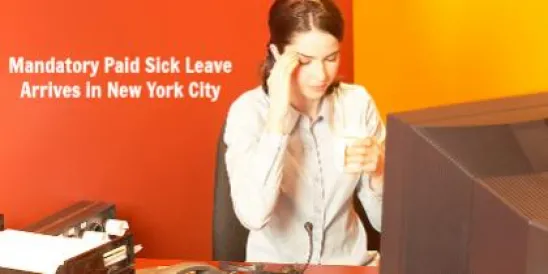The Retirement of OSHA Deputy Assistant Secretary Richard Fairfax: What Difference Might It Make?
On May 3, 2013, the U.S. Occupational Safety and Health Administration’s (OSHA’s) Deputy Assistant Secretary of Labor, Richard Fairfax, retired. All quarters – labor, management and the Department of Labor – agree that his departure from the agency is a substantial loss. Fairfax served at OSHA for 34 years, as a compliance officer, an area director, OSHA’s Director of Enforcement for many years, and, for the last two years, Deputy Assistant Secretary. Though trained as an industrial hygienist, he understood the safety and health sides of occupational safety and health.
Unlike many long-term government employees, Fairfax also had a sensitivity to, despite little experience in, the business world. And that sensitivity served him and the agency well in the resolution of enforcement issues and the development of efforts like national emphasis programs, the Site-Specific Targeting Program, and the Severe Violators Enforcement Program. The employer community never imagined Fairfax to be an advocate within the agency, but all knew him to be open minded and a voice of reason attempting, no matter what political party was in power, to bring the agency’s work and policies back to center.
Who, now, within OSHA will argue for balance? In this age of political polarization, who at OSHA will argue for consistency and at least perceived moderation? Who will bring the broad range of experience that Fairfax had to the agency’s discussions of major issues and its development of efforts to address them? How will OSHA’s enforcement scheme change, if at all? Will its philosophy and policies shift substantially left and right as administrations change? Unfortunately, all constituent groups in the area of occupational safety and health will have to wait to see.
OSHA’s Shifting Position on Requests for Employers’ Voluntary OSH Self-Audits
In July of 2000, after having published a draft, invited comments, and considered those comments, the U.S. Occupational Safety and Health Administration (OSHA) under President George W. Bush published its “Final Policy Concerning the Occupational Safety and Health Administration’s Treatment of Voluntary Employer Safety and Health Self-Audits”. 65 Fed. Reg. 46, 498 (July 28, 2000). In that Policy, OSHA announced that it would not “routinely request [an employer’s] voluntary self-audit reports at the initiation of the inspection … [or] use such reports as a means of identifying hazards upon which to focus inspection activity”. However, OSHA said, if it had “an independent basis to believe that a specific safety or health hazard warranting investigation exist[ed], OSHA [might] exercise its authority to obtain the relevant portions of voluntary self-audit reports relating to the hazard”.
The reasons OSHA developed and published the Policy were the varied practices of different OSHA area offices in requesting copies of employer self-audits and the concern that, if employers knew that their self-audits might be used against them during OSHA inspections and enforcement proceedings, those employers might stop performing them. And no well-informed safety and health professional would argue that it is a good idea for employers not to audit their establishments for safety and health hazards on a regular basis. If the results of any such audit, however, were to paint a roadmap for OSHA to inspect or were to give OSHA ammunition with which to turn serious citations into willful citations, employers would think twice before conducting an audit or having one conducted for them by an occupational safety and health professional.
In a recent case not very well publicized, a federal district court in Wisconsin recently pinned back OSHA’s ears in response to an attempt by an area office, with the support of its region and OSHA headquarters, to subpoena the totality of an employer’s self-audits during an inspection despite admittedly having “an independent basis to believe” that only two or three specific safety or health hazards existed in the establishment being inspected. When the employer refused to comply with the subpoena, OSHA commenced a lawsuit to enforce it.
The court held that, by publishing its self-audit policy, “OSHA publicly committed to limit the exercise of its own investigatory authority in order to induce businesses to perform self-audits for their own operations” and that the agency could not simply change its mind, after having created a reasonable expectation of privacy in the self-audits, without running afoul of the Fourth Amendment to the U.S. Constitution. At the hearing, despite the court’s clear decision to that effect, OSHA continued to take the position that it has the right to subpoena and to inspect all of an employer’s self-audit documents, irrespective of the Policy’s limitations.
That position appears to be OSHA’s continuing position nationally. Stories from other OSHA areas and regions tell recently of similar attempts by the agency to seek copies of employers’ self-audits during inspections and arguably without a substantial independent basis for making the request, as the Policy requires. OSHA appears to continue to take the position that, at any time, it may request or even subpoena the totality of an employer’s self-audit reports, apparently for whatever reason it wishes, because the Policy is not binding on it.
It is likely that OSHA will hold to that position in the foreseeable future around the country. Employers, therefore, should understand the self-imposed limits OSHA has under the Policy and be aware of the District Court’s opinion above, which issued in the case of Solis v. Grady Wisconsin Subsidiaries, LLC, Case No. 3:13-cv-00017-mc (February 1, 2013). The opinion is creative and well-reasoned and may very well be persuasive to another federal court in a subpoena enforcement action or to the Occupational Safety and Health Review Commission in a case in which an employer claims that the inspection resulting in citation was conducted unreasonably in violation of Section 8 of the Occupational Safety and Health Act.



 />i
/>i

